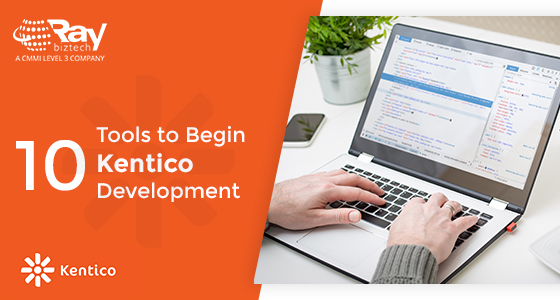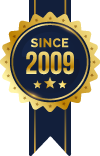10 Tools to Begin Kentico Development

The development and maintenance of a Kentico-based CMS depends on how well aware the development team is. The Kentico developers might find it a bit gloomy before actually getting started with the Admin panel. The purpose of this discussion is to simplify the understanding of the admin panel, in order to derive the maximum functionality from a fully-developed Kentico website.
Page Templates
Kentico version 8.2 offers page templates as the basic element, which is visible on the dashboard by default. New templates can be added through the Page Template application. A Page Template is re-usable, and is made of distinct content zones. It is essential to manipulate page templates separately, in order to stave off the impact of widgets and web parts. Unique pages such as Store Checkout or Homepage would require their own template.
Page Layout and Content Zones
Content Zones are essential in splitting our template into different sections which enable us to deploy the content on the page in a well-arranged manner. One can create Content Zone using the layout tab, which is usually coded in a simple way. However, if one needs a menu on the left or an exclusive blog index or a list of newsletter titles, the zone can well be split using the HTML code. Another benefit of splitting the zones is to make provisions for edits where required, and where not required. For examples, if images can be edited while the menu remains untouched, they must be placed into distinct content zones.
The Master Page
Kentico lets you add Master Page for most of the sites, which serves as the highest node. One crucial element is the placeholder Web part, which should be placed between the header and footer of the master page. It serves as the base page, and it is made of a Layout and Content zones. The master page also contains the global header and footer, and has provision to insert new custom zones. A sub-section can have an exclusive Master Page of its own provided it has a dedicated Header Type, such as a Shop.
Web Parts
Web Parts have been used primarily to add content to the relevant zones, once Page Templates, Layouts, and Content Zones are finalized. Web Parts are used for adding static content, and cannot render themselves in their own, as they are usually created in the Design mode. Web Parts are used while building a wide range of controls and components such as menus, lists, forms, radio buttons, search bars, and more.
Widgets
Page Editors can add widgets directly into their pages in their own content, in the form of Web Parts. A developer works immensely to improve the widgets, for example, making the fields invisible. Before adding a widget, you need to add a content zone and set specific permissions for Customization. You can also set the properties to determine what is displayed when editors add a widget to a page.
Custom Web Parts and Widgets
One can create own Web Parts and Widgets, in addition to the standard ones offered by Kentico. One can copy existing web parts and alter their code in order to add extra functionality, or make the layout of the web part more active. A developer can add ‘WHERE’ condition to the custom web part and add new properties. Once a new web part is initiated, the corresponding .ascx and ascx.cs files are created.
Page Types
One of the most crucial provisions from Kentico 8 is the Page Type element, which allows individual users to add, edit, or remove articles, blogs, and news items in a versatile manner. A Page Type can be added, and then one can add requisite fields for gathering user information, in addition to generating an own exclusive template. For example, news Page Types can fetch the relevant articles based on a News Page repeater that is assigned to the pat to a tree containing individual news items.
Forms
Kentico has a provision for adding forms using a dedicated application. The data entered would be stored and viewed under the farm’s application. If you want to customize the appearance of your farm, Kentico allows you to use JavaScript to create an entirely customized layout. Custom fields and boxes can be added to the form, and the form can be fed with programming logic that governs input and storage of furnished user data. The form application can store user data as it is entered.
Repeaters
These components enable display of content from the Page Type on to the News and Blog sections. It consists of a subset of information pertaining to Page Type, like individual product details. The Repeater accomplishes this by picking a specific Sitemap tree and then displaying the relevant content on to a page. Detailed product information is added to a product page with the help of a link by virtue of Transformations.
Transformations
Transformations are required to display individual Page items on the Repeater. Transformations consist of blocks of HTML code that are capable of retrieving properties and pertaining to a specific Repeater.
About Raybiztech
Raybiztech is a leading Global Information Technology (IT) Services and Solutions, a CMMI Level 3, ISO 27001:2022 Certified Company. We are a Member of NASSCOM, HYSEA, NJTC, and AIIA. Raybiztech offers comprehensive end-to-end IT Services for Business Application Development, Enterprise Solutions, Enterprise Collaboration Services, Testing and Quality Assurance Services, Cloud Computing and IT Infrastructure Management to organizations in the Banking & Finance, Insurance, Healthcare, Manufacturing, Retail, Media & Entertainment, Leisure & Travel, Telecom and Energy & Utilities verticals as well as Independent Software Vendors.

